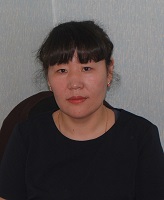The language of poetic texts in contemporary Tuvan pop songs
DOI:
https://doi.org/10.25178/nit.2017.2.12Keywords:
Tuva; Tuvan music; pop music; Tuvan songs; Tuvan pop songs; lyrics; linguistic analysisAbstract
The article presents a linguistic analysis of lyrics of modern Tuvan pop songs. While studying them is important for understanding contemporary songwriting in Tuva, it is also necessary to discover what linguistic means, functional styles and vocabulary are used by modern authors of popular lyrics. The study can also help identify how contemporary global trends influence songwriting in means of linguistics.
Three groups of songs can be defined in Tuvan pop music. The first of them comprises songs written by both professional poets and amateurs with good writing skills. Their texts have homogenous literary style and are intended for general audience (rather than specific groups of listeners). They do not feature any jargon or youth slang. The second group consists of “songs of the people” which are still popular and relevant, but not classified as folklore. This group also contains songs previously banned by censorship, and those written by ex-convicts. Their lyrics differ in style, and the vocabulary is also heterogenous: they can include slang and contain vernacular language. The third group includes songs following popular global and Russian trends, which triggered rapid evolution in Tuvan songwriting. There is significant number of authors or even creative unions, who write both lyric and music. They are stylistically uneven, contain a lot of neologisms, borrowed vocabulary, slang and jargon words and sometimes even macaronic (mixed) language.
The author provides a more in-depth analysis of lyrics belonging to the third group of songs. They can be divided into 6 thematic subgroups which greatly vary in lexical content and the use of tropes. The lyrics of contemporary Tuvan songs are quite close to the everyday language young people use. Active employment of jargon in the language of young and middle-aged people, especially in lyrics of modern songs, steadily decreases the literary norms of Tuvan language. The author emphasizes that studying the lyrics is important for preserving and evolving the Tuvan lingual culture, for its further development and for helping the speakers of Tuvan language to be more attentive to how they speak their mother tongue.
References
Aksenov, A. N. (1964) Tuvinskaia narodnaia muzyka [Tuvan folk music]. Moscow, Muzyka. 255 p. (In Russ.).
Vinogradov, V. V. (1963) Stilistika. Teoriia poeticheskoi rechi. Poetika [Style. The theory of poetic speech. Poetics]. Moscow, Goslitizdat. 255 p. (In Russ.).
Gal'perin, I. R. (1981) Tekst kak ob"ekt lingvisticheskogo issledovaniia [The text as an object of linguistic research]. Moscow, Nauka. 138 p. (In Russ.).
Grigor'eva, O. V. (2008) Osobennosti antinomizma kontrkul'turnoi rok-liriki: dikhotomiia «svoe — chuzhoe» v sisteme binarnykh koordinat [Peculiarities of Antinomianism of Contra-cultural Rock Lyrics: Dichotomy “Friend-Alien” in the System of Binary Opposition]. Lingvokul'turologiia, no. 2, pp. 73–98. (In Russ.).
Grinkova, N. P. (1957) Izuchenie iazyka pisatelia [Learning the language of the writer]. Moscow, Uchpedgiz. 278 p. (In Russ.).
Efimov, A. I. (1954) O iazyke khudozhestvennykh proizvedenii [About the language of literary works]. Moscow, Uchpedgiz. 288 p. (In Russ.).
Katanov N. F. (1907) Narechiia uriankhaitsev (soiotov), abakanskikh tatar i karagasov. Teksty sobrannye i perevedennye N. F. Katanovym. In: Obraztsy narodnoi literatury tiurkskikh plemen, izdannye V. Radlovym. Vol. IX. St. Petersburg. 588 p. (In Russ.).
Kyrgys, Z. K. (1992) Pesennaia kul'tura tuvinskogo naroda [Song culture of the Tuvan people]. Kyzyl, Tuvinskoe knizhnoe izdatel'stvo. 128 p. (In Russ.).
Dorzhu, K. B. (2006) Mariia Kuzhugettiң shүlүkteriniң grammatiktig onzagailary. In: Tyva literatura talazy-bile ertem stat'ialaranyң chyyndyzy. Kyzyl, IRNSh. 102 p. Pp. 33–47. (In Tuv.).
Piurbiu, S. B. (1976) Yrlar. In: Tyva ulustuң aas chogaaly. Kyzyl, Tyvanyң nom үndүrer cheri. Pp. 84–100. (In Tuv.).
Tyva literatura talazy-bile ertem stat'ialaranyң chyyndyzy (2006). Kyzyl, IRNSh. 102 p. (In Tuv.).
Chyyndy yrlar (1947). Kyzyl, Tyvoblnүch.154 s. (In Tuv.).
Cььndь cogaaldar (1937). Pir tugaar yndyrgeni. Kyzyl, Cogaal komitedi. 140 p. (In Tuv.).
Cььndь cogaaldar (1939). Iji tugaar yndyrgeni. Kyzyl, Cogaal komitedi. 158 p. (In Tuv.).
Published
How to Cite
Issue
Section

Author(s) license holder(s) grant rights for their work to the journal (grantee of a license) under the simple non-exclusive open license in accordance with Art. 1286.1 «Open license for a research work, work of literature or fine arts», Civil Code of the Russian Federation.
New Research of Tuva publishes articles under the Creative Commons Attribution-NonCommercial license (CC BY-NC).
Since it is an open license, author(s) reserve the right to upload the article to their institutional repository, submit it to another journal (if it allows republications), or republish it on their own website (in full, or in part).
However, several conditions apply here:
a) The republished version must always contain the name(s) and affiliation(s) of the author(s), the original title and the hyperlink to the original version on the New Research of Tuva website;
b) It must be in open access, free of charge, and no category of readers must be in any way whatsoever advantaged over general readership.
c) should the contribution be submitted elsewhere by its author(s) without substantial modification (30% or more of original text unchanged), the body of the article should contain a disclaimer that the original version was published in New Research of Tuva (with a link to the respective page)
The CC-BY-NC is a non-revocable license which applies worldwide and lasts for the duration of the work’s copyright.









